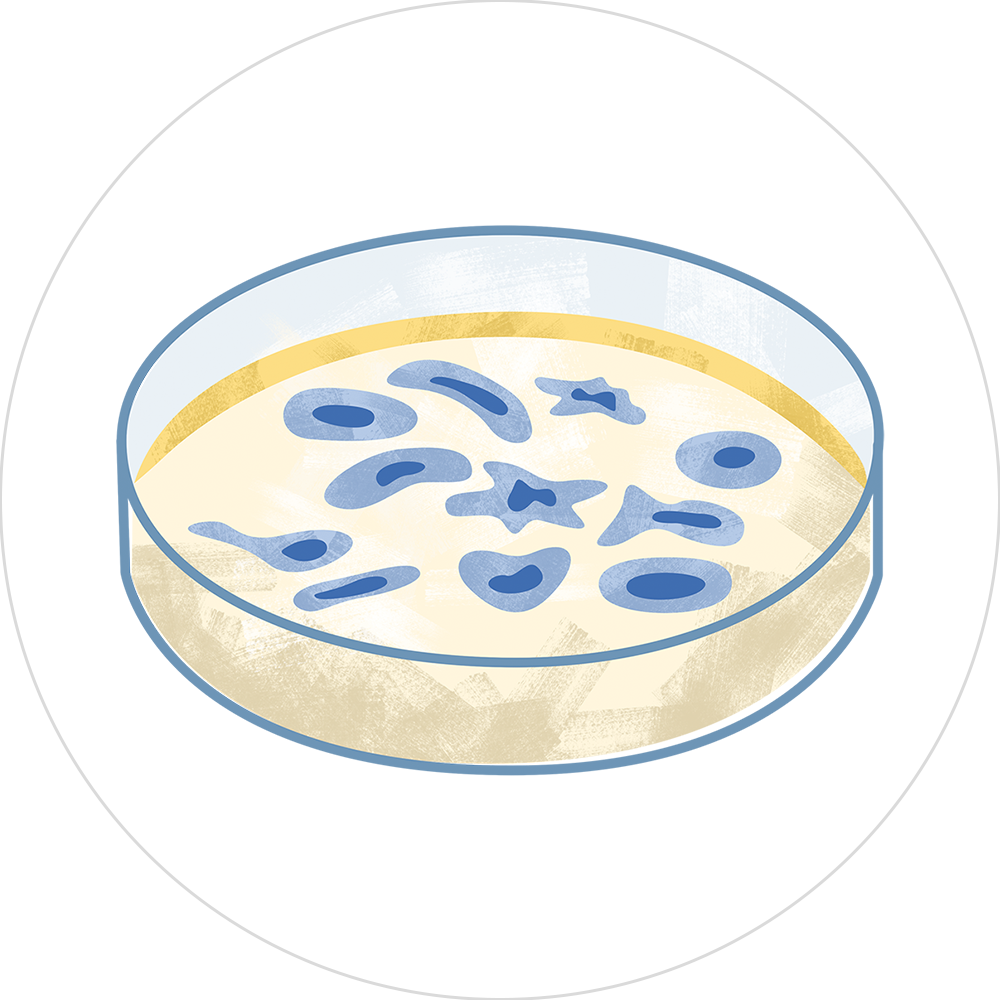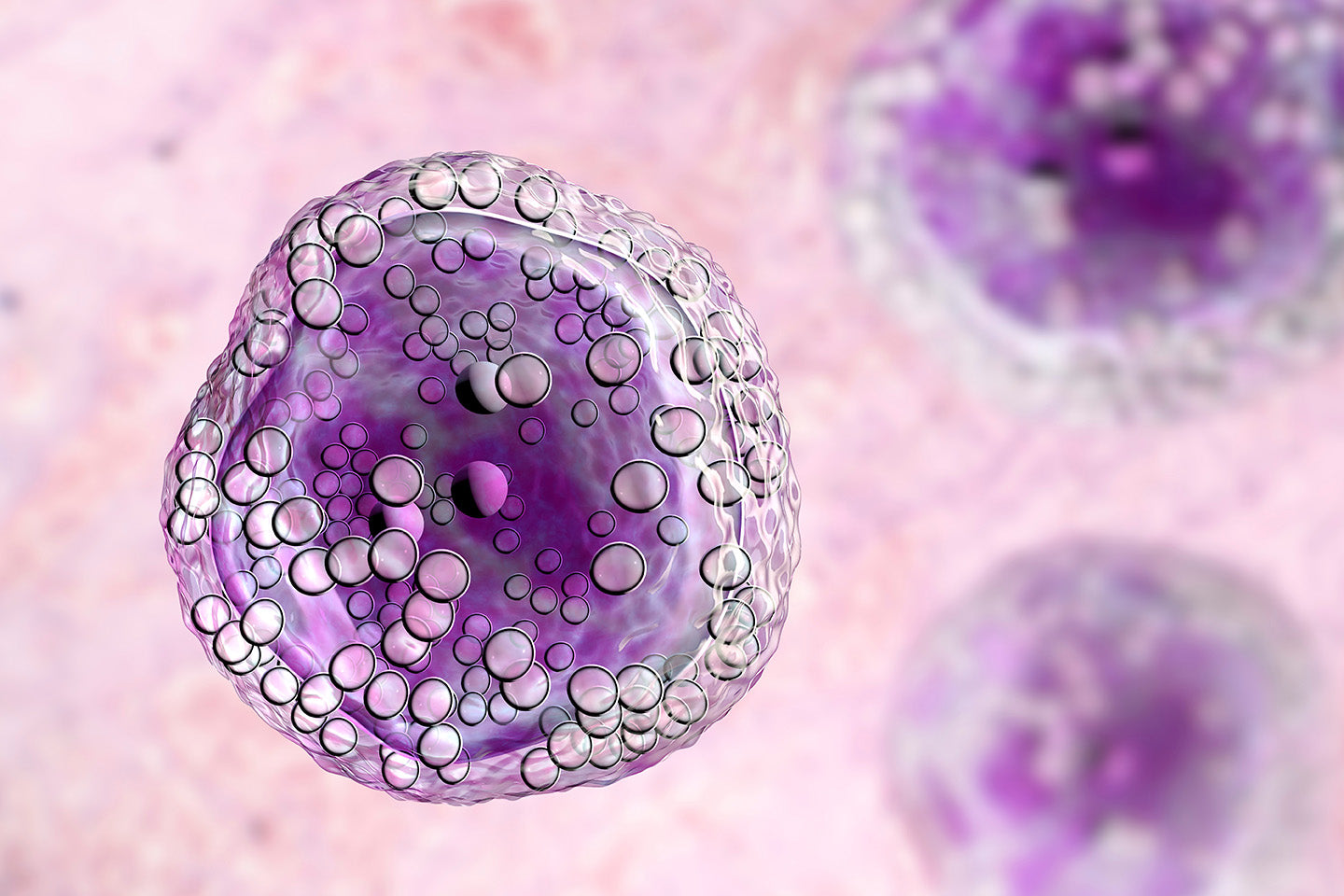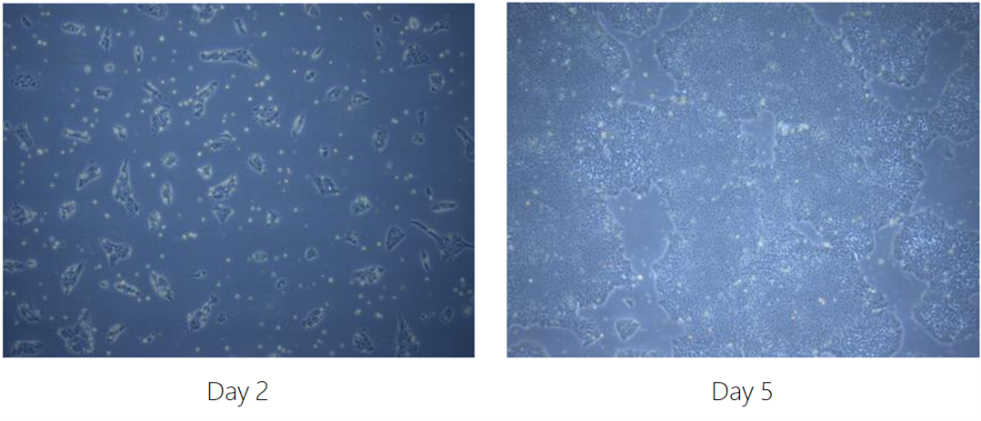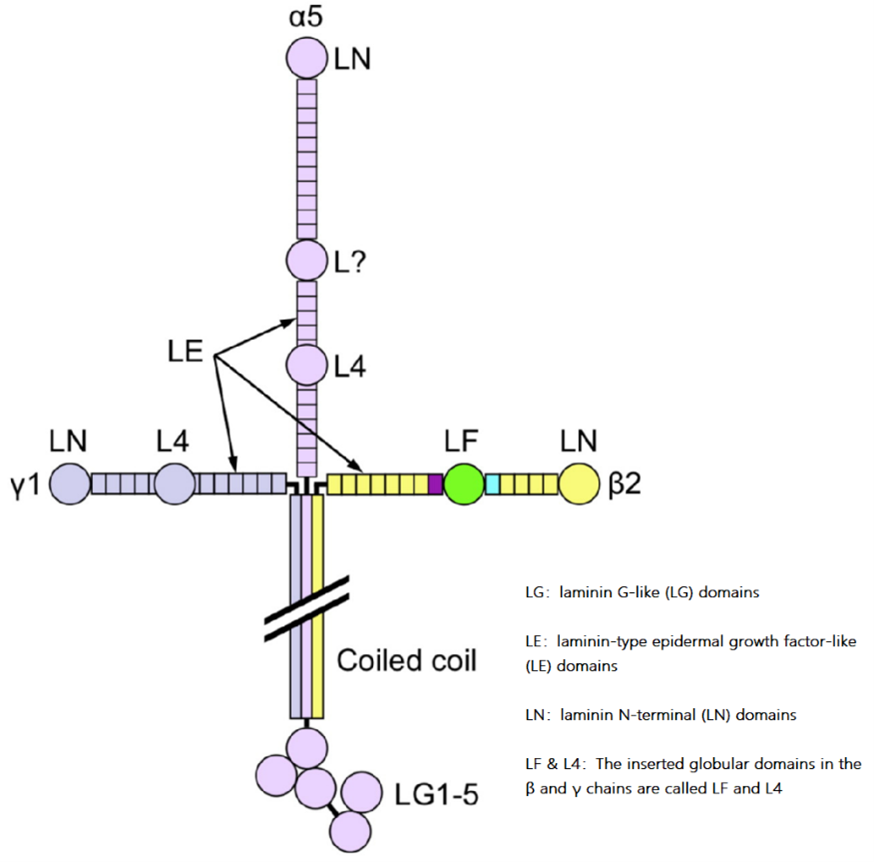Use on Various Cell Types
Applicable to a wide range of cells: iPSCs, hMSCs & most anchorage-dependent progenitor cell types


KACTUS has successfully developed a high-quality Laminin 521 product that can be applied to scientific research (research-grade) and preclinical development (preclinical-grade). It can effectively support the normal growth and passage of PSCs, maintain good stemness, and ensure the homogeneous growth of cells with genetic stability. Laminin 521 can be applied to the cultivation of stem cells and other primary cells and the development of related stem cell products.
Applicable to a wide range of cells: iPSCs, hMSCs & most anchorage-dependent progenitor cell types
> 95% Purity
Low Internal Toxicity (<10EU/mg)
Compatible with a variety of feeder-free stem cell culture media
Maintain homogeneous growth and karyotype stability of stem cells
Due to their unique ability for self-renewal and directional differentiation, stem cells can be applied in many fields such as embryonic development research, drug screening modeling, and cell therapy. At the same time, stem cell culture methods continue to be optimized. Laminin 521 is an important matrix adhesion protein, which can recreate a suitable growth environment for primary cells such as stem cells, and is currently one of the most commonly used trophoblast-free culture substrates.

Laminin 521 can support the growth and proliferation of differentiated primary cells, such as cardiomyocytes, retinal pigment epithelial (RPE) cells, nerve cells, endothelial cells, islet cells, etc. For example, the basement membrane damage of the isolated islets will cause islet function decline and cell death, but when cultured on a matrix containing Laminin 521, it can significantly promote the survival and function maintenance of islet cells [9], and has now been successfully applied in the original Generation islet cell culture system. Likewise, cardiac progenitor cells differentiated in vitro can proliferate on Laminin 521-containing matrices and transform into mature cardiomyocytes.

Laminin 521 is a new anti-GBM disease pulmonary hemorrhage autoantibody target. Studies have shown that in anti-glomerular basement membrane disease, circulating antibodies can recognize Laminin 521 in addition to type IV collagen, indicating that Laminin 521 is Another major autoantigen against GBM [10], autoantibodies against Laminin 521 may promote lung injury and lead to pulmonary hemorrhage by increasing the total amount of IgG bound to the alveolar basement membrane, which provides theoretical clues for the development of related drugs.
KACTUS Laminin 521 was pre-coated with 0.5µg/cm² in a 6-well dish, seeding the thawed iPSC cells at a concentration of 1×10⁴/cm². After 5 days of culture, stem cell markers were detected via flow cytometry.

Figure 2. Normal expression of stem cell markers OCT3/4, SOX2, SSEA4, TRA-1-60, etc.:

Figure 3. Laminin 521 can effectively maintain the growth of human iPSCs.
Laminin 521 (LN521, LAMB2, LN-11) is a heterotrimeric glycoprotein composed of α5, β2 and γ1 chains, expressed in stem cells and most basement membranes (especially in the nerve sheath, muscle nerve junction and glomerular basement membrane GBM). It is a key matrix protein that supports the growth of stem cells and maintains the stability and performance of the basement membrane.
Laminin 521 can form a huge net-like material environment together with nestin, collagen, fibronectin, glycosaminoglycan, and other extracellular matrix components. It is a key supportor of various tissues such as muscle fiber, epithelium, nerve, capillaries, fat, etc. In addition, the LG1-5 region of Laminin 521 can bind to cell membrane surface integrin α6β1 or α3β1, etc., start the downstream PI3K-Akt signaling pathway, and promote cell proliferation.

Figure 4. Laminin 521 structure [1].
General recommended procedure:
1. Coat the cell culture flask/dish with Laminin 521 (a typical dosage is 0.5 μg/cm² but this can vary depending on the experiment).
2. Wash the cells and incubate with digestive enzymes or EDTA.
3. Separate into a single cell suspension, centrifuge, and resuspend in appropriate fresh medium.
4. Seed cells on culture flask/dish coated with Laminin 521.
[1] Pulido D, Briggs DC, Hua J, Hohenester E. Crystallographic analysis of the laminin β2 short arm reveals how the LF domain is inserted into a regular array of LE domains. Matrix Biol. 2017 Jan;57-58:204- 212.
[2] Naylor RW, Morais MRPT, Lennon R. Complexities of the glomerular basement membrane. Nat Rev Nephrol. 2021 Feb;17(2):112-127.
[3] Yap L, Tay HG, Nguyen MTX, Tjin MS, Tryggvason K. Laminins in Cellular Differentiation. Trends Cell Biol. 2019 Dec;29(12):987-1000.
[4] Dziedzicka D, Markouli C, Barbé L, Spits C, Sermon K, Geens M. A High Proliferation Rate is Critical for Reproducible and Standardized Embryoid Body Formation from Laminin-521-Based Human Pluripotent Stem Cell Cultures. Stem Cell Rev Rep . 2016 Dec;12(6):721-730.
[5] Lynch VJ, Nnamani MC, Kapusta A, Brayer K, Plaza SL, Mazur EC, Emera D, Sheikh SZ, Grützner F, Bauersachs S, Graf A, Young SL, Lieb JD, DeMayo FJ, Feschotte C, Wagner GP . Ancient transposable elements transformed the uterine regulatory landscape and transcriptome during the evolution of mammalian pregnancy. Cell Rep. 2015 Feb 3;10(4):551-61.
[6] Nguyen MTX, Okina E, Chai X, Tan KH, Hovatta O, Ghosh S, Tryggvason K. Differentiation of Human Embryonic Stem Cells to Endothelial Progenitor Cells on Laminins in Defined and Xeno-free Systems. Stem Cell Reports. 2016 Oct 11;7(4):802-816.
[7] Cameron K, Tan R, Schmidt-Heck W, Campos G, Lyall MJ, Wang Y, Lucendo-Villarin B, Szkolnicka D, Bates N, Kimber SJ, Hengstler JG, Godoy P, Forbes SJ, Hay DC. Laminins Drive the Differentiation and Self-Organization of hESC-Derived Hepatocytes. Stem Cell Reports. 2015 Dec 8;5(6):1250-1262.
[8] Meseguer-Ripolles J, Kasarinaite A, Lucendo-Villarin B, Hay DC. Protocol for automated production of human stem cell derived liver spheres. STAR Protoc. 2021 Apr 30;2(2):100502.
[9] Brandhorst D, Brandhorst H, Lee Layland S, Acreman S, Schenke-Layland K, Johnson PRV. Basement membrane proteins improve human islet survival in hypoxia: Implications for islet inflammation. Acta Biomater. 2022 Jan 1;137:92- 102.
[10] Shen CR, Jia XY, Luo W, Olaru F, Cui Z, Zhao MH, Borza DB. Laminin-521 is a Novel Target of Autoantibodies Associated with Lung Hemorrhage in Anti-GBM Disease. J Am Soc Nephrol. 2021 Aug ;32(8):1887-1897.